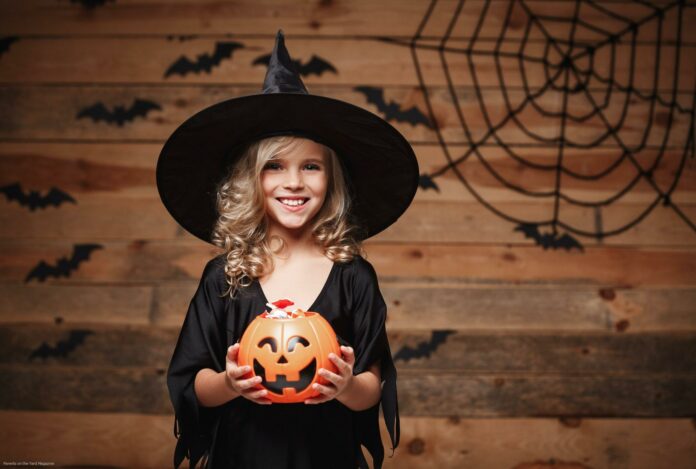To explain Halloween to children and understand it, we must take into account their age and perhaps omit those parts that may seem scary.
Explaining Halloween to kids
If Halloween is approaching and you have small children at home, they may want to celebrate this party, although they may not know what its origin is or, in fact, why it is celebrated. Therefore, we want to offer you, below, some guidelines and tips that will help you to know how to explain Halloween to children.
One of the things we like most about children is their insatiable curiosity. So as we approach the darkest and scariest holiday of the year, you should expect your children to start wondering why Halloween is celebrated and where this holiday is born.
Depending on the age of the children, they may not fully understand the origin of this holiday, so based on the Halloween story, you should adopt or explain it with words that are understandable to children.
What does Halloween mean, and what is its origin?
Halloween is a contraction of the term “Hallow’s Eve,” which is the night before All Saints’ Day, November 1. This is a public holiday (in Spain it is in fact a national holiday), which in 835 Pope Gregory IV decided to move to October 31. Many rituals associated with All Saints’ Day have their roots in the Celtic celebration of Samhain, when the door to the ‘other world’ was thought to be wide enough for the souls of the dead and other spirits to enter. In the land of the living.
The souls of the dead were thought to participate in Samhain festivals. People wore disguises to hide their true identity from the evil spirits present. In some places, children went door to door, collecting food for the celebration or firewood for the bonfires.
But for younger children, any talk about the dead could be spooky and take them away from the feeling of Halloween joy and curiosity.
As we have mentioned earlier, we must bear in mind that they are children, and a piece of good advice may be to change the scariest parts of the story and keep talking about it as a party in which people, for just one night, disguise themselves as someone it’s not. Talk to your kids about how Halloween symbolized the end of the harvest season – November 1 was marked in the past as the end of summer and the beginning of a long, cold winter.
Then you can explain that Halloween was a bit like a party but more of a preparation for the harsh winter to come. Of course, historical accuracy aside, you can always tell your kids that it’s a day to dress up, hang out with friends and family, and have fun.
Let’s not forget that it is a fun event.
In general, explain to your children that everyone sees Halloween in different ways. Some see it as a time to trick or treating. Others don’t. Some belief in a harvest festival, and some don’t. Some celebrate the dead and use it as a time to appreciate the things associated with the non-living, and others do not. But above all, Halloween is a fun and happy time for everyone, especially for the little ones who can let off steam in a thousand activities.
A simple way to explain the Halloween celebration to children
The celebration of Halloween is a lot of fun for children, especially since it usually consists of dressing up and eating candy. However, there is more to Halloween than the classic “treat or mischief,” and you may want to share the history of this holiday with your family.
Step 1;
Explain the origins of the party. Although medieval Christianity is the origin of most modern Halloween celebrations, some traditions have their origin in the Samhain, an ancient Irish festival. This festival honored the dead and marked the beginning of winter and the beginning of the New Year (according to the ancient Celtic calendar) in early Christian and pagan times.
Step 2;
Talk about how the celebration spread. As Christianity gained strength in Europe in the 9th century, the church declared November 1 All Saints Day in honor of saints who did not yet have their own day of celebration. The celebrated special mass came to be known as “Allhallowmas,” or a mass of all the saints. The night before was known as “All Hallows Eve”.
Step 3;
Discuss the origins of the “sweet or mischievous” practice. One version is that on All Souls’ Day, early Christians went door to door begging for “soul cakes,” offering a prayer for the donor’s soul in return. Others say that in Samhain, participants wore masks representing the dead and went from house to house collecting food that had been reserved for the deceased.
Step 4;
Explain why the participants wear Halloween costumes. People used to believe that the line between the dead and the living was weakened on All Hallows’ Eve, allowing spirits to re-enter the world and possess the living. Apparently fearful people wore ghost and evil spirit costumes to avoid an encounter with the royal spirits.
Step 5;
Talk about pumpkin lanterns, the ones that were originally hollowed-out turnips, not pumpkins. According to folklore, a man named Jack, who once deceived Satan, was excluded from heaven and hell when he died. He was condemned to wander in the dark, with only coal to light his way. That is why on Halloween, candles are placed inside carved pumpkins.
And finally, explain to them about other similar celebrations in the rest of the world. From the Day of the Dead in Mexico to the Sicilian Festival of the Dead to Guy Fawkes Day in England, there are many Halloween-like celebrations around the world. Your family might even enjoy adopting some traditions from these various cultural celebrations.

